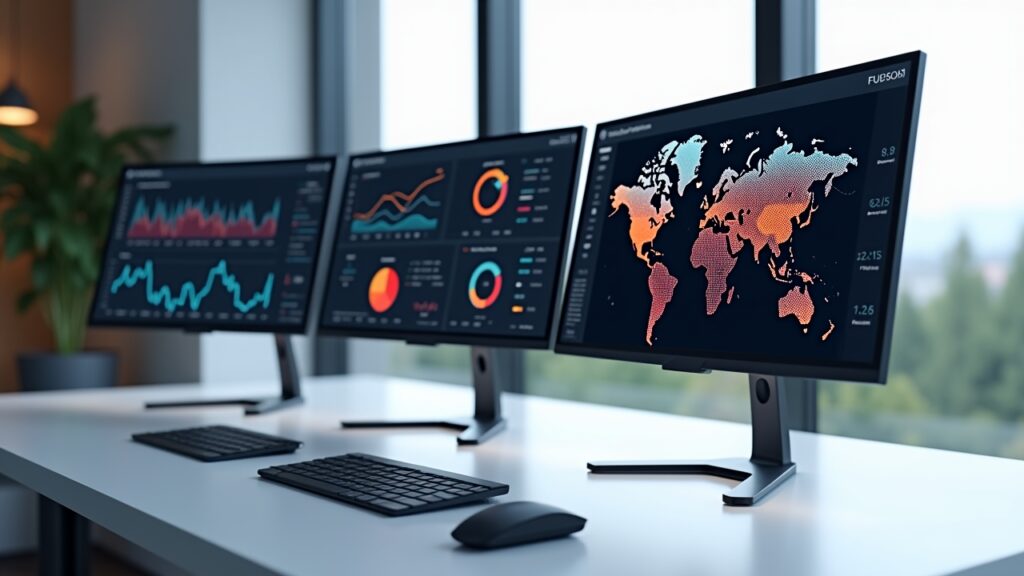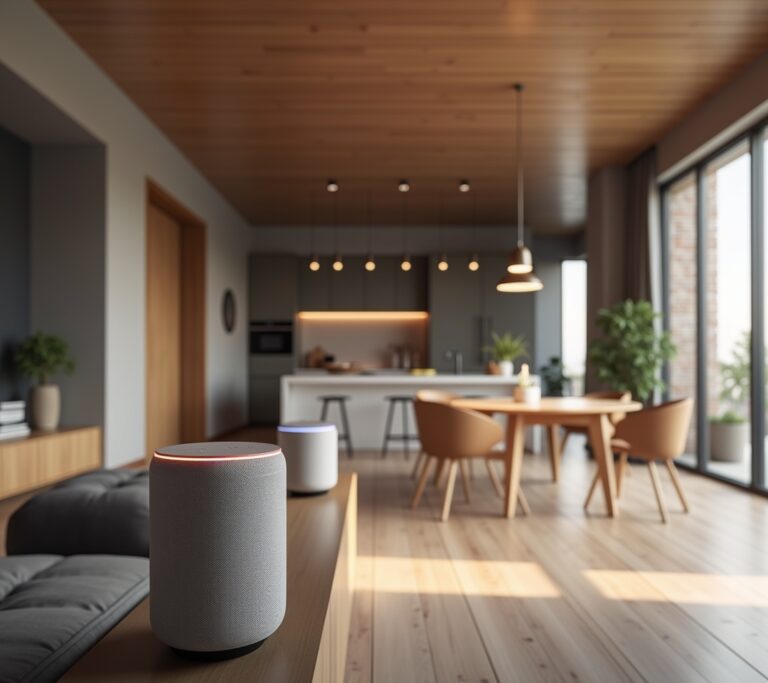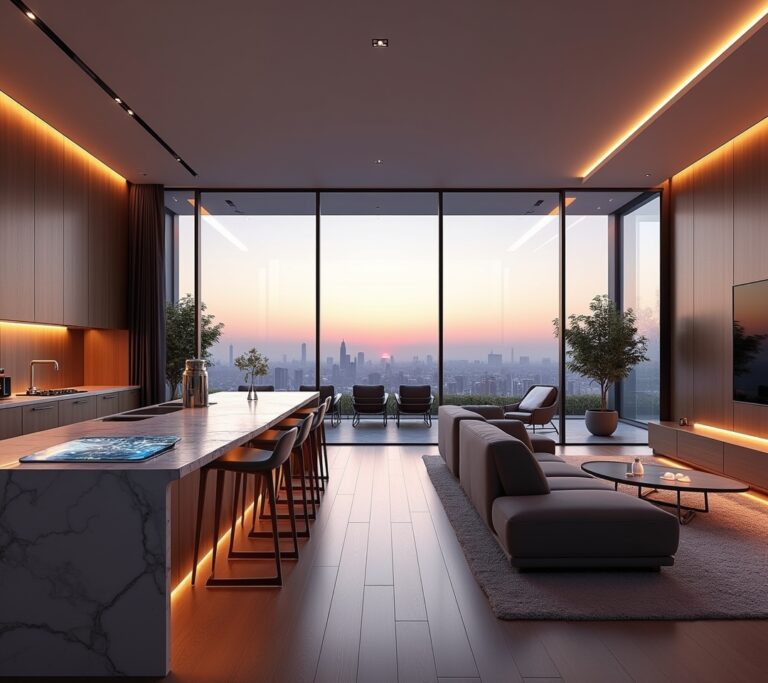Advertisements
Did you know that 69% of millennials own at least one smart home device? I’ll never forget the day I realized my house had become a tech jungle with seven different apps just to control my lights, thermostat, and security cameras. Talk about first-world problems!
After spending way too many nights fumbling through apps while half-asleep, I decided enough was enough. Building a custom smart home dashboard changed everything for me – and honestly, it’s easier than you’d think.
Why Your Smart Home Needs a Central Command Center

Let me paint you a picture. It’s 2 AM, and your baby’s crying. You need to turn on the hallway light, check the nursery camera, and maybe adjust the temperature.
With separate apps? That’s like three minutes of squinting at your phone. With a custom dashboard? One tap, boom, done.
The real magic happens when everything’s in one place. My dashboard lets me control my Philips Hue lights, Nest thermostat, Ring cameras, and even my coffee maker from a single screen. No more app-hopping madness!
Choosing Your Dashboard Platform (The Foundation Matters)
Okay, so here’s where I messed up initially. I tried building everything from scratch because I thought I was some kind of coding wizard. Spoiler alert: I wasn’t.
After wasting two weekends, I discovered these game-changing platforms:
- Home Assistant – The powerhouse for tech-savvy folks
- Hubitat – Great for local control freaks (like me)
- SmartThings – Samsung’s user-friendly option
- Homebridge – Perfect for Apple ecosystem lovers
I went with Home Assistant because it’s crazy customizable. Sure, the learning curve was steeper than my driveway, but the community support is phenomenal. Plus, it runs on a Raspberry Pi, which costs less than a fancy dinner out.
Designing Your Dashboard Layout (Where Form Meets Function)
This is where things get fun! Think of your dashboard like your phone’s home screen – you want the important stuff front and center.
My main dashboard has these sections:
- Quick controls (lights, locks, garage)
- Climate overview with room temperatures
- Security camera feeds
- Energy usage graphs
- Scene buttons for movie night, bedtime, etc.
Pro tip I learned the hard way: Don’t go overboard with fancy graphics. My first attempt looked like a spaceship control panel, and my wife couldn’t figure out how to turn on the living room lights. Keep it simple, stupid – that’s my motto now.
Integrating All Your Smart Devices (The Technical Stuff)
Here’s where some patience is needed. Getting all your devices to play nice together can be… interesting.
Most smart home devices work through integrations or APIs. Home Assistant has over 2,000 integrations built-in, which sounds great until you realize your specific smart plug from that random Amazon brand isn’t supported. (Ask me how I know.)
The workaround? I use IFTTT for stubborn devices. It’s like a translator between your dashboard and those oddball gadgets. Not elegant, but it works!
Creating Automations That Actually Make Sense
Automations are where custom dashboards really shine. But here’s my advice: start small.
My first automation was simple – lights turn on at sunset. Then I got carried away and created this complex routine that would adjust lights based on the weather, time, and whether my phone was home. It was broken more often than it worked!
Now I stick to practical stuff:
- Morning routine that gradually brightens lights and starts coffee
- Away mode that arms security and adjusts temperature
- Bedtime scene that locks doors and dims lights
- Motion-activated bathroom lights at night (game-changer!)
Making It Pretty (Because Aesthetics Matter)

Let’s be real – if your dashboard looks like it was designed in 1995, nobody’s gonna use it. I spent considerable time making mine look good, and it paid off.
I use a dark theme with blue accents (easier on the eyes at night). Each room has its own card with relevant controls grouped together. The layout’s responsive too, so it looks good on tablets, phones, and that old iPad mounted on my kitchen wall.
There’s tons of themes available online. I started with the Mini Graph Card for beautiful data visualization. Makes checking energy usage actually enjoyable!
Your Smart Home, Your Rules
Building a custom smart home dashboard transformed how I interact with my home. No more juggling apps or yelling at Alexa when she doesn’t understand me.
The best part? You can start small and expand over time. Maybe begin with just your lights and thermostat, then add more as you get comfortable.
Remember, the goal isn’t to automate everything – it’s to make your life easier. And please, test your automations before leaving for vacation. Trust me on that one!
Ready to dive deeper into smart home tech? Check out more guides and reviews at Tech News 360 – we’re always exploring the latest ways to make your home smarter, not more complicated!




[…] to dive deeper into smart home technology? Check out more guides and reviews at Tech News 360 where we break down the latest tech to help you make informed decisions. Your […]